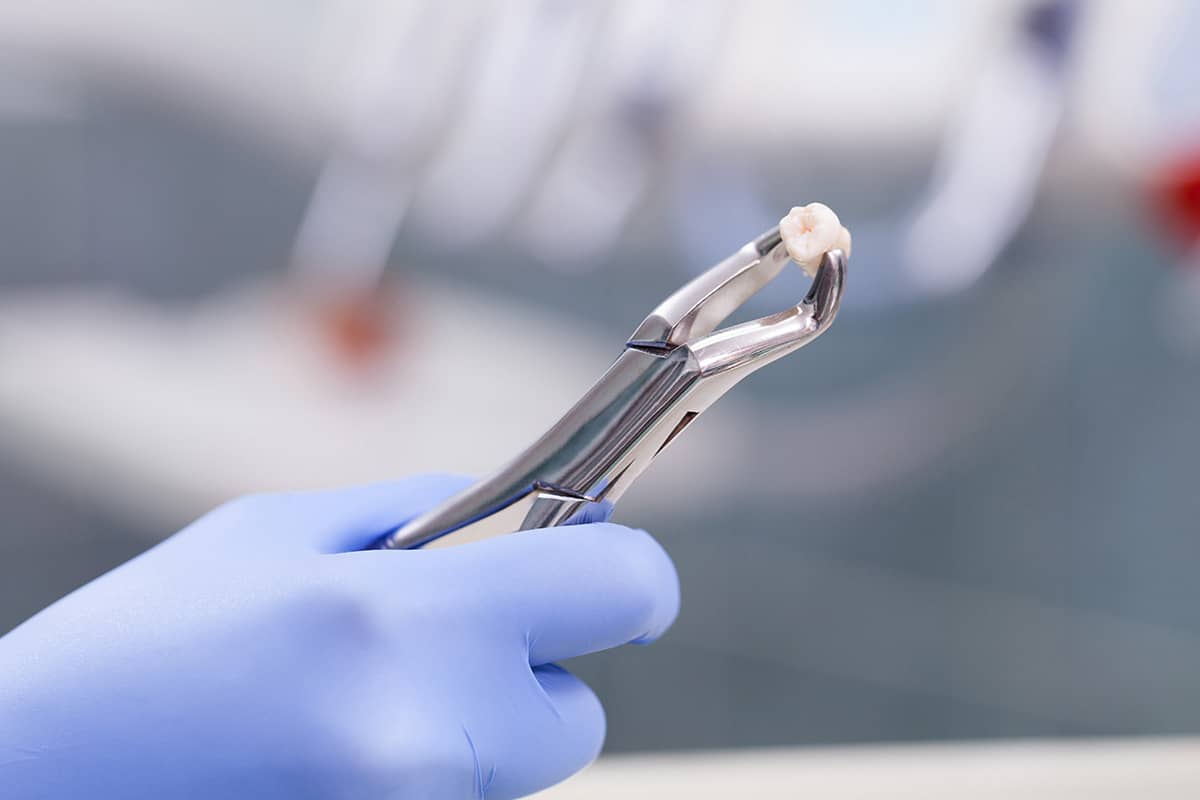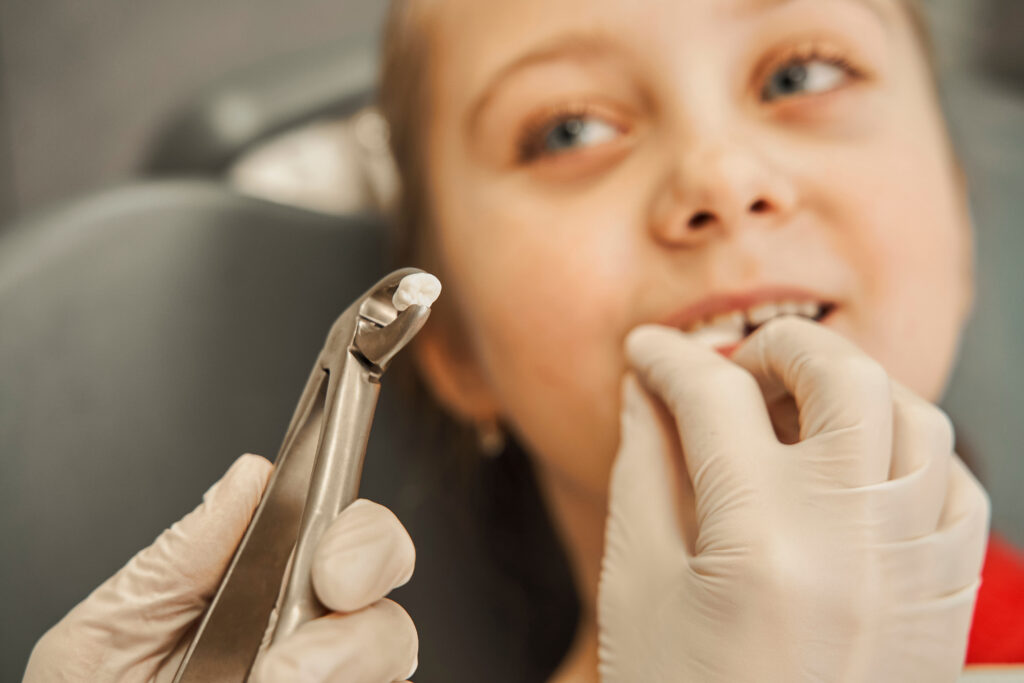
Definition of Tooth Extraction
A tooth extraction is a surgical procedure that involves the removal of a tooth from its socket. This procedure is commonly done for wisdom tooth removals, simple extractions, or more complex procedures that require specialized instruments. Orthodontic treatments may involve tooth extraction when natural teeth are blocking the development of other teeth. It can also be necessary to restore oral health by removing severely damaged or decayed teeth. Prior to tooth extraction, a dentist typically administers a local anesthetic to desensitize the area and then proceeds to extract the tooth by loosening it from its socket. Aftercare instructions should be followed closely after a tooth extraction to help reduce swelling and speed up healing.
Reasons for Extracting Teeth
There are many reasons why a dental extraction may be necessary. Tooth extractions can be done to remove teeth that are impacted, severely decayed, or have experienced trauma. In cases of severe periodontal disease, the gum tissue and bone around the tooth may need to be removed before a dental implant can be placed in the tooth socket. Root canal treatments may not always help save a tooth, so extraction may be necessary if the root is compromised or too damaged for restoration. Emergency tooth extractions may also be required if there is severe pain or infection due to a broken or cracked tooth.
Tooth decay is one of the most common reasons for dental treatment and can lead to severe pain and infection if left untreated. Gum disease can also cause damage to the bone and gum tissue around the teeth leading to an extraction being necessary. Wisdom tooth extractions are often performed on young adults when their wisdom teeth are misaligned or overcrowded in their mouth, causing discomfort and potential damage to other teeth. Extraction of these teeth helps prevent further complications from occurring.

Immediate Aftermath of a Tooth Extraction
Bleeding and Swelling
After a tooth extraction, bleeding and swelling are normal for up to 24 hours. There may also be bruising near the area of the extraction. During a surgical extraction, dental forceps or other tools may be used to loosen and remove permanent teeth or baby teeth that do not come out on their own. The dentist will then use gauze to stop the bleeding and suture any soft tissues that have been disturbed during the procedure. If you have undergone an oral surgery involving multiple extractions or more complex procedures, your dentist may recommend an over-the-counter medication such as ibuprofen or acetaminophen to help reduce pain and swelling.
It is important to follow aftercare instructions given by your doctor, including applying cold compresses and using prescribed medications if necessary. Some types of extractions require special care for adjacent teeth that may have been affected during the procedure.
Recovery After a Tooth Extraction
After tooth extraction, it is important to take time for recovery and proper healing before beginning any type of restoration on the area where the extracted tooth was located. Your dentist or oral surgeon can discuss options for restoration such as dental implants or bridge work depending on your medical history and specific needs. Antibiotic medications may be prescribed by your doctor if there is an infection present around the extracted site. In some cases where general anesthesia was used for the extraction procedure, additional precautions need to be taken during recovery in order to ensure safety throughout your recovery process.
Dealing with pain after tooth extraction
Pain after tooth extractions is a common occurrence. The type of anesthesia used during the procedure, the complexity of the extraction, and other medical conditions can all affect your experience with pain following an extraction. Pain medications prescribed by your dentist or oral surgeon can help relieve any discomfort you may experience during recovery.
Nerve injuries are rare, but can occur during complex extractions such as impacted wisdom teeth removal. In these cases, your dentist may prescribe stronger pain medication and suggest alternative methods to manage your pain, such as applying cold packs to the affected area or taking oral medicines like acetaminophen or ibuprofen to reduce swelling and inflammation.
Your doctor may also recommend that you take antibiotic prophylaxis before and after the dental procedure in order to prevent infection from developing around the extracted site. It is important to follow instructions given by your doctor regarding taking antibiotic medications before and after any dental procedure.
Hours after a tooth extraction it is normal to experience some swelling, tenderness, slight bleeding and discomfort at the site of the extraction which should subside within 24 hours following the procedure. During this time it is important to limit any strenuous activities or exercise in order to allow for proper healing. For simple tooth extractions, it is possible for patients to return to their normal activities within two days post-operation. However, if multiple teeth were extracted or if a more complex surgery was performed then additional precautions will need to be taken in order for adequate healing and recovery time.
Avoiding Dry Socket and Promote Healing
In order to avoid dry sockets and promote healing after a tooth extraction procedure, it is important to limit strenuous activities for at least 24 hours following the procedure to reduce the risk of dry sockets after extraction. In addition, common treatments such as using cold compresses and taking over-the-counter pain medications as prescribed by your dentist can help reduce pain and swelling in the area of the extraction. Additionally, avoiding smoking and drinking alcohol during recovery can also help speed up the healing process.

Follow-up Care After a Tooth Extraction
Dental Visits Following an Extraction
It is important to schedule a follow-up dental appointment for effective care after tooth extraction. At this appointment, your dentist will assess the healing process and determine if further treatment is necessary. During the appointment, your dentist may take an x-ray of the area to check for any signs of infection or dry socket. It is also important to discuss any medications that you are taking, as some can interfere with the healing process.
Your dentist may also recommend that you have regular professional cleanings every six months to help keep the area clear from infection and promote healthy tissue growth. Additionally, it is important to contact your dentist right away if you experience any signs or symptoms of infection, such as persistent pain, swelling, redness, or discharge coming from the extraction site.
Overall, following up with your periodontist after a tooth extraction is essential for proper healing and continued oral health. By scheduling regular dental appointments and being aware of warning signs of infection or dry socket, you can ensure that your teeth stay healthy and strong after a tooth extraction procedure.
Proper Oral Hygiene Practices Post-Extraction
Good oral hygiene is essential for proper healing after tooth extraction. After tooth extraction, it is important to practice good oral hygiene habits to help reduce the risk of infection and promote healing. First, it is important to bite down gently on a piece of gauze for at least thirty minutes in order to allow a blood clot to form at the extraction site. This helps to stop any bleeding from the area and allows for proper healing. Additionally, it is also important to rinse with lukewarm salt water (one teaspoon of salt in 8 ounces of water) every few hours or as directed by your dentist. This helps to keep the area free from bacteria and debris that can cause infection.
After surgical tooth extraction, it is recommended to wait at least 24 hours before rinsing or spitting out any water or saliva in order to avoid dislodging the protective blood clot from forming properly. It is also important to avoid drinking through a straw, smoking cigarettes, and/or drinking alcohol for at least 48 hours after extraction, as these activities can disturb the healing process and cause dry sockets.
Finally, it is essential to brush twice daily around the extraction site—avoiding vigorous scrubbing of the area—and flossing regularly throughout the entire mouth in order to remove food particles that may be stuck between teeth or along gum lines that could lead to inflammation or infection if not removed properly. By following these simple instructions and maintaining good oral hygiene practices post-extraction, you can ensure successful healing and continued oral health.
Aftercare Following a Tooth Extraction
It’s important to follow proper aftercare instructions following a tooth extraction to ensure proper healing of your gums and reduce any risk of infection. After your procedure at your local dental clinic, it’s important to bite down on a gauze pad for 30 minutes following the removal of the tooth root in order to help control any bleeding from your gums. You should also apply cold compresses such as ice packs over your face for 15 minutes at a time throughout the day, which will reduce swelling and provide some pain relief as well. Painkillers such as ibuprofen or paracetamol can also help relieve any discomfort you may experience during this time.
You should avoid hard foods like nuts and seeds until you’ve completely healed from your procedure, as they could irritate your gums further or dislodge blood clots from where your extracted tooth was once located. Stick with softer foods like yogurt or mashed potatoes which require less chewing but still provide adequate nutrition while allowing you enough energy throughout your healing process. It’s also important that you keep up with oral hygiene by rinsing with lukewarm salt water several times each day as well as using sugar-free gum containing xylitol which helps promote healthy saliva production aiding in wound healing within hours of use after surgery has been completed. Applying antibiotic ointment twice daily can also help speed up recovery time while providing protection against infection caused by bacteria entering into open wounds near where the extracted teeth were once located.
To learn more about the process before and after and to see if having a tooth pulled is the right choice for you, call the practice at (305) 447-1447 for an appointment today.